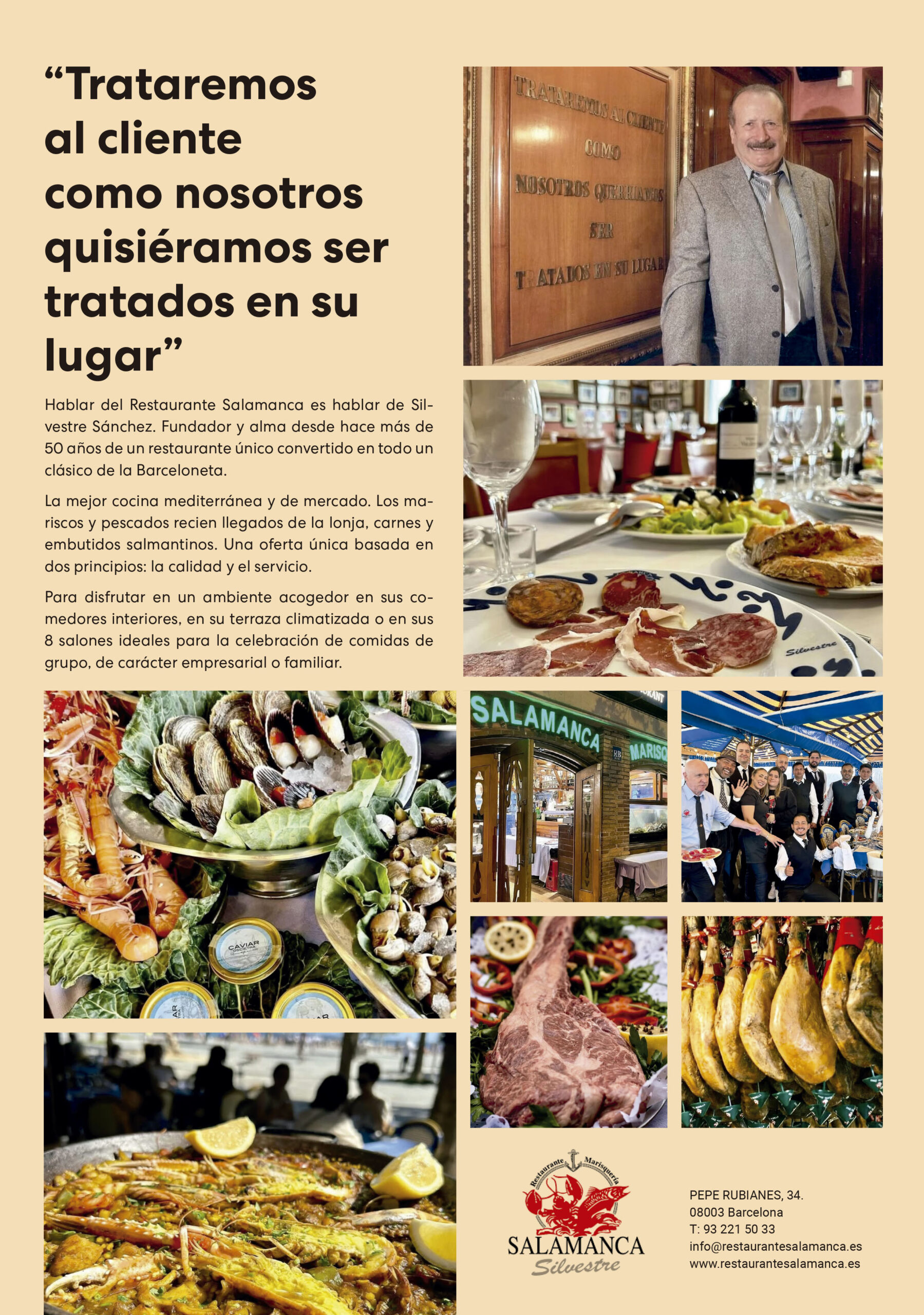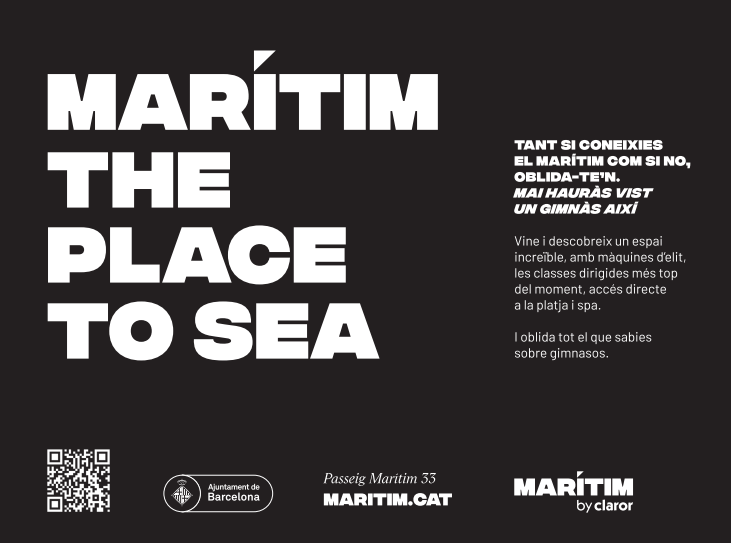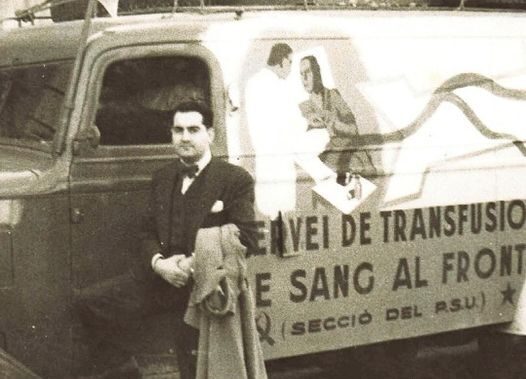This festival is held in honor of Saint Michael the Archangel, patron saint of the neighborhood, whose feast day is September 29.
This celebration maintains, in a big way, its essence: a mixture of tradition, community, popular culture, and Mediterranean spirit. It has managed to renew itself without losing its roots, incorporating everything from “correfocs” (fire runs) to modern concerts, but always with its seafaring essence intact. It is one of the most emblematic and traditional celebrations in the neighborhood.
History
In 1753, Barceloneta was just another neighborhood in the city, and its church, a suffragan of Santa María de el Mar, celebrated all the major festivals common to the capital and the parish. They celebrated San Juan, Carnival, San Pedro, San Jaime, Corpus Christi, and the Fiesta de la Mercè. On the eve of San Juan, it was customary for the people of Barcelona to go to the sea to cool off and seek good fortune. The most striking solemnity celebrated in Barceloneta was the Corpus Christi procession, which, in addition to the entire neighborhood, attracted a large crowd of Barcelona residents and people from nearby seaside towns who came to admire it.
As exclusively secular celebrations, it is necessary to mention, first of all, the Carnival parties, which were very popular. They were started by the Marquis de la Mina, a friend of promoting these popular celebrations, and after many years of decline and deprivation, they resumed their popularity at the end of the 18th century, under the command of Captain General Agustín de Lancaster. Several warehouses were used for these dances, one of them between La Riba and La Llanterna, and others in the streets of Santa Anna, Santa Clara, and the Plaza de la Fuente. They began on Candlemas Day and continued on other feast days until the arrival of Lent. The party lasted from two in the afternoon until nightfall and the price was half a peseta. Attendees could go in costume but without masks. The modest price made it affordable for the lower classes to attend, and the set schedule, never at night, allowed people from the city to attend and return home before the gates of the Portal del Mar closed.
Saint Miguel
In 1855, San Miguel was established as the patron saint’s day, and the main festival was held on the feast day of Saint Michael the Archangel, patron saint of the church and the entire neighborhood. In the early days, there were two festivals: on May 8, for the Apparition of the Archangel, the date of the consecration of the church, and on September 29, the feast day of the Dedication of San Miguel, but the latter remained the main one.
One of the venues that became increasingly important during the festival was the Paseo Nacional, which was built in the mid-19th century and became the showcase of the neighborhood from the very beginning. The fairgrounds were set up on the Paseo, and activities such as folk dances and balloon launches were held there.
The dance of the marquee
In Barceloneta during the local festival, starting in the 19th century, the spaces dedicated to dancing increased, and the invention of the marquee brought new possibilities. Initially located in Barceloneta Square, the marquee was an enclosure that created a festive space that did not exist before or after it was set up. The marquee, which was eventually moved to the Plaza de la Fuente and remained there until the 1960s, offered a wide, open space with no columns or other obstacles; it was a very distinctive and significant space, unique as a dance hall and the result of the ingenuity of popular Catalan architecture.
As noted by the eminent folklorists Joan Amadas and Aureli Capmany, in the early decades of the 19th century, ballroom dancing became fashionable due to the influence of French immigrants who had fled the Revolution. This fact, together with the gradual liberalization of dances and shows, which at that time required permits from the civil and military authorities to be organized, made dancing one of the favorite pastimes of all strata of nineteenth-century society. The popularization of ballroom dancing led to the emergence of numerous dance associations and societies, as well as permanent dance halls, such as the famous La Patacada hall and the amusement gardens of the Campos Elíseos on Barcelona’s Paseo de Gracia. This dance craze coincided with the confiscation of convents, which were quickly occupied by cheerful dancers. Thanks to the skill of the decorators, the spaces and cloisters of the convents of Carmen and Santa Catalina in Barcelona, among many others, were transformed into improvised and luxurious halls, lit and decorated with sumptuous draperies, statues, and mirrors in imitation of the halls of the aristocracy. However, as the new owners demolished or occupied the convents, the dance societies had to find an alternative, which was none other than the invention of the marquee. Folklorist Joan Amadas attributes its creation to the painter and decorator Josep Caba, who, starting in 1840, set up several marquees in the gardens of the Raval district and outside the city walls, near what are now Pelayo and Ronda Universidad streets.
The first known couple’s dance arrived in Barcelona in 1790. It was a waltz, the first dance to encourage physical contact between dancers, between men and women, as previous dances, minuets and contradanzas, allowed little more than hand contact. From Barcelona, the dances spread throughout Catalonia. In 1840, the mazurka was introduced, followed by the polka around 1845, and five years later, the chotis was already being danced. The presence of all these dances and some others that were less common, such as the one that later developed into the pasodoble and was known as the española, remained stable until World War I.
The marquee dances also had specific elements that allowed for various games or dance activities to be played. These were known as lantern dances, bouquet dances, stolen dances, auction dances, or sweeping dances. These types of games had various origins: to raise money to pay for the party by selling bouquets, lanterns, or fans that couples gave each other as gifts; to distract the dancers; to attract attention; or to help younger people find a partner. The games had competitive and show-off elements. The lantern dance was a competition between couples, and the winner was whoever could hold the lantern lit the longest without it burning out.
The election of the queen (“pubilla”) of the festivities was a tradition. The girl who won represented the neighborhood in all institutional events for a year.
The emergence and proliferation of cultural centers, casinos, community centers, clubs, etc., with the aim of creating spaces for socializing, coexistence, education, and recreation, were one of the most significant manifestations of the collective behavior of Catalan society in the 19th century. This phenomenon became completely inseparable from the spread and success of marquees, as it was usually these entities that promoted dancing and other events during the local festivals, as well as renting the marquees to accommodate their members and guests and the outsiders who attended the festivals. This phenomenon became an integral part of the spread and success of marquees, as it was usually these entities that promoted dancing and events at local festivals, as well as renting out marquees to accommodate their members and guests and outsiders who attended the festivals.
The marquees were assembled and dismantled in just a few days by a “gang” of four or five workers from the marquee company, plus a variable number of assistants, from three to five, provided by the local council or the association that hired the marquee. As architects Josep I. de Llorens y Duran and Alfons Soldevila y Barbosa noted in the catalog of the exhibition on marquees held in Parets del Vallès in 1985: “During the days of the local festival, the marquee became another building in the town, usually located in a strategic spot in the town center. It completely changed the configuration of the space where it was installed, altering routes and perspectives, purposes and everything else, blocking the way, and, with its presence, signaled and emphasized that these were exceptional days.”
Before the Civil War, marquees were generally promoted by private non-profit cultural or recreational organizations. Occasionally, they were also promoted by entrepreneurs from the entertainment world or directly by a marquee owner who acted as an entrepreneur, such as Francesc Satorra from Palamós (1929). The different nature of the many organizations and associations in towns and cities, representing different ideologies and social classes, meant that several marquees were erected in the same town, competing with each other in terms of both the quality of the orchestras and the marquees themselves. The hiring of a marquee was usually done verbally between the promoting organizations and the decoration company. The agreement specified the size, the days of operation, the number of chairs and stalls, and, obviously, the price, which depended on the support offered by the committees and town councils for setting up and dismantling it. The interior decoration and lighting were left to the decorator. The final result of a marquee was a surprise that was only revealed after it had been erected. Shortly before the Civil War, written contracts began to be drawn up, which, in very few cases, were accompanied by a detailed description of the decoration.
The cost of renting the tents was usually financed by ticket sales, raffles, and auctions at the dances and shows that were held. In the event of a deficit, the committees and city councils, sometimes not without problems, took care of it. But there were also cases of non-payment that ended up in court.
When the Fiesta Mayor arrived, Barceloneta was decked out in its finest. While the official program was full of activities organized by local organizations, the street festivities were no less important, with spectacular dances and children’s festivals being the main attractions.
Decorated streets
For years, a large number of streets took part, transforming themselves for a few days by decorating themselves to show off their new splendor, making the street festival, after the Gracia festival, the second most important in Barcelona. Every year, the streets competed for first prize, which was usually cash, awarded by the artistic commission of the festival committee.
It seems that this commemoration was precisely the reason for awarding Calle Villa Joyosa a very original and different prize. Living history explains that when decorating the aforementioned street, it was decided to pay tribute by putting up a photo of Francesc Macià, who was President of the Generalitat at the time. During a visit to Barceloneta, taking advantage of the celebration, Macià himself went to Villa Joyosa Street, which had been awarded for its decoration, and when he saw his photo as part of the decorative composition, he was very flattered and, in return for his attention, ordered that the entire street be paved. And so it was done. This fact meant that, as it was the only paved street in the neighborhood, it became known as “la calle fina” (the elegant street).
After the Civil War, the tradition of decorating the streets resumed, as did the fellowship dinners and dances. In the 1990s, the streets began to slowly disappear, and today it is one of the traditions that is being lost.
Festive celebrations
The same pattern was usually followed for the town festival. First, the most important event was the Mass on the day of the Archangel. This was a solemn Mass attended by someone from the Town Hall. Afterwards, there was a procession through the neighborhood with the representation of the different groups preceded by the giants and the banner. A donation was made to the poorest families and, often, depending on the organization, raffles were held to buy basic necessities. There were dances, a funfair, balloon launches, theatrical performances, concerts by the Municipal Band or the Red Cross, children’s games, athletic and swimming races, and, to finish, fireworks, which were usually set off in La Riba or Plaza Palacio. Later, a marquee was added, as well as street decorations, with a competition for the best decorated street.










